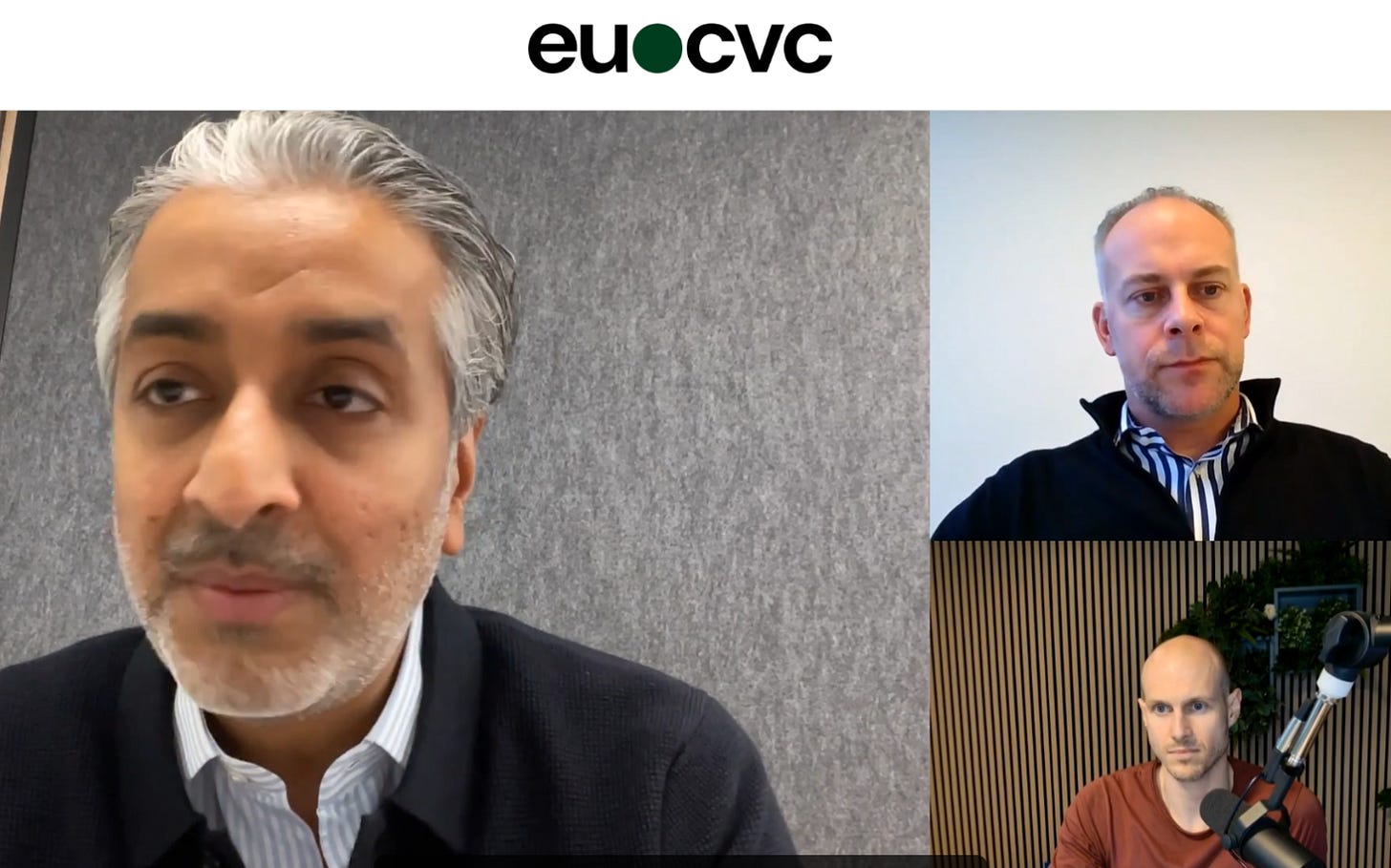#75: Fidelity’s Alokik Advani on thematic investing and strategic alignment to back FinTech innovators
Hi, I'm Jeppe and welcome to my bi-weekly podcast/newsletter on Corporate Venturing.. My aim is to provide a comprehensive perspective on the latest developments in the field and its related topics, drawing from the insights of top management, venture capitalists, founders, LPs, and family offices. I aim to offer valuable information and thought-provoking content that will aid in understanding the importance of Corporate Venturing in business strategy.
With over six years of experience leading Fidelity’s CVC strategy, Alokik has spearheaded investments in companies like Moneybox, Moonfare, and 73 Strings. He shares insights into the unique challenges and opportunities of combining venture capital expertise with the strategic goals of a global asset manager. The conversation explores Fidelity’s thematic investment framework, the evolving CVC landscape, and the pivotal role of AI and sustainability in shaping the future of financial services.
1. How Fidelity Approaches Corporate Venture Capital (CVC)
Fidelity’s CVC strategy focuses on early-stage FinTech investments with strategic alignment to its core business. With typical investments between $3–$10 million and a global perspective, the firm prioritizes financial returns while ensuring strategic resonance. Key portfolio companies include Moneybox, Moonfare, and 73 Strings, reflecting a thematic approach to private asset infrastructure and valuation tools.
2. The Balance Between Strategic and Financial Goals in CVC
Alokik emphasizes the dual focus on financial returns and strategic alignment. Unlike many CVCs, Fidelity avoids tying investments to immediate contracts, instead fostering long-term optionality. Two-thirds of its portfolio currently collaborates strategically with Fidelity, with room for more partnerships over time.
3. Building a Thematic Investment Framework
Fidelity employs a thematic approach informed by both internal insights and external market research. Teams identify high-impact themes such as sustainability and carbon accounting, analyzing opportunities in areas like SME carbon credit management (e.g., Greenly) and ESG metrics (e.g., Silvera). This approach ensures alignment with both market needs and Fidelity’s strategic goals.
4. Challenges in the European VC Ecosystem
Late-stage funding in Europe is highly concentrated, with capital often available only to the best companies—but not always from the most desirable investors. The conversation highlights the need for stronger M&A dynamics between European corporates and GPs, as well as fostering repeatability through experienced founders and successful exits.
5. Differentiating Fidelity as a CVC
Unlike traditional CVCs, Fidelity’s approach integrates deeply with its internal ecosystem. Regular dialogue with Fidelity’s operational teams informs investment strategies while offering startups access to revenue potential, domain expertise, and validation. This model fosters trust and mitigates the “not-invented-here” syndrome prevalent in many corporates.
6. Sustainability and Innovation in Financial Services
Fidelity focuses on sustainability investments with financial and strategic relevance, such as retail proxy voting (e.g., Tumelo) and climate risk assessment tools. Open banking is cited as a key enabler for unlocking financial inefficiencies, creating opportunities for transformative technologies like AI to thrive within regulatory frameworks.
7. The Role of AI and Geopolitics in the Future
Alokik underscores the revolutionary potential of AI in investment research and portfolio management, predicting significant efficiency and revenue advancements. However, he warns that geopolitical uncertainties could hinder innovation, particularly in the boundaryless nature of financial services.
I hope you enjoyed this newsletter. If you have any suggestions or contributions that you would like to share with me, please do not hesitate to reach out. I would be delighted to hear from you.


